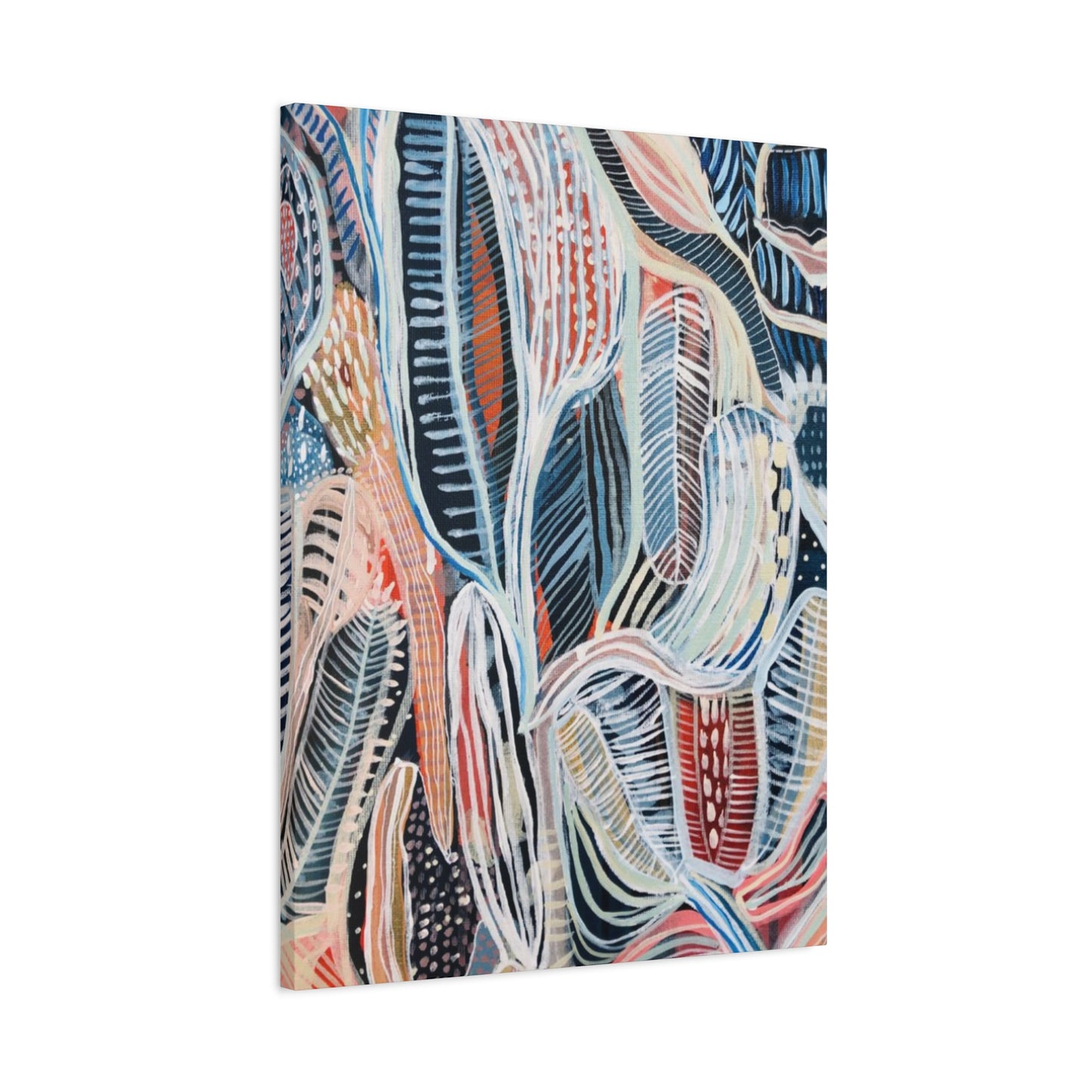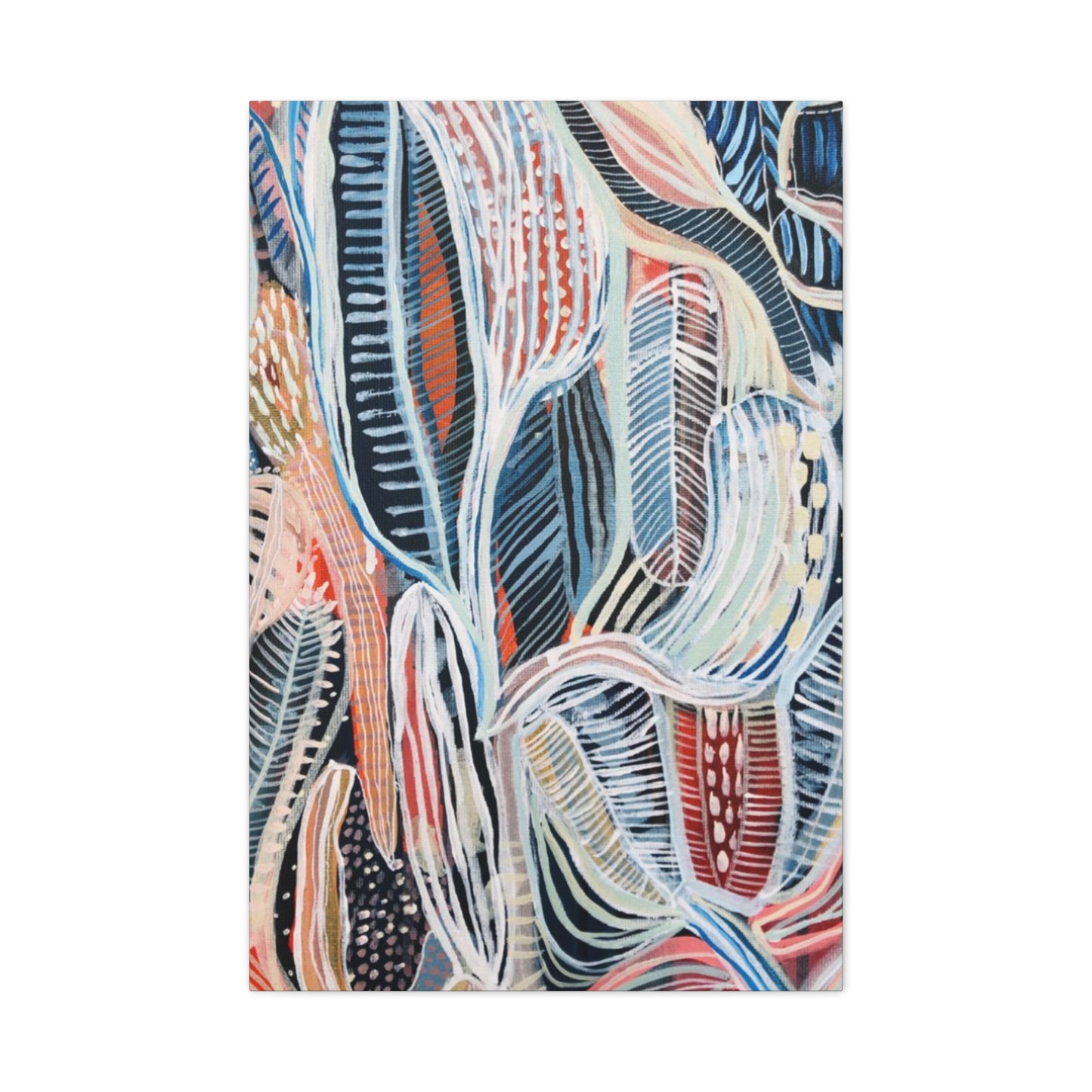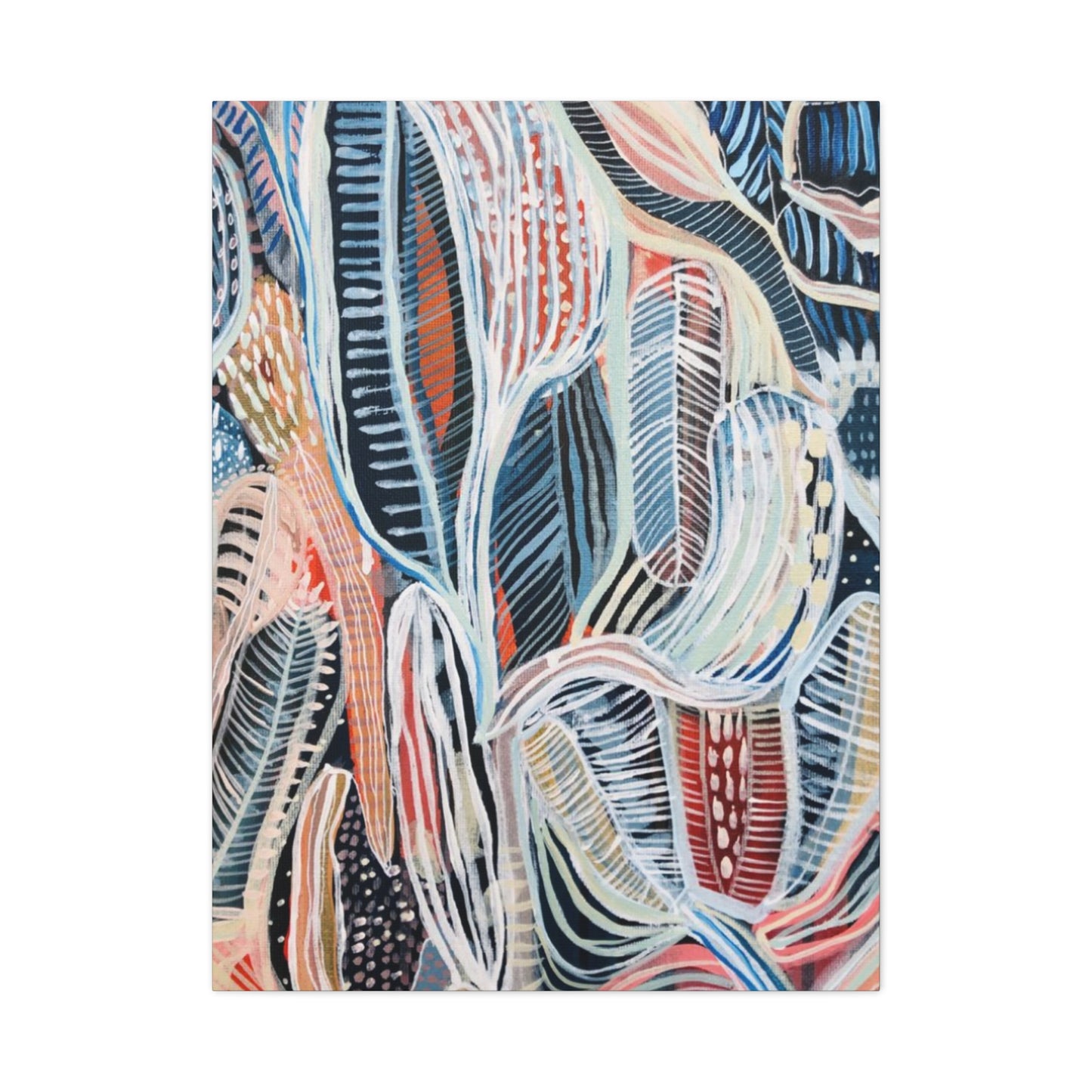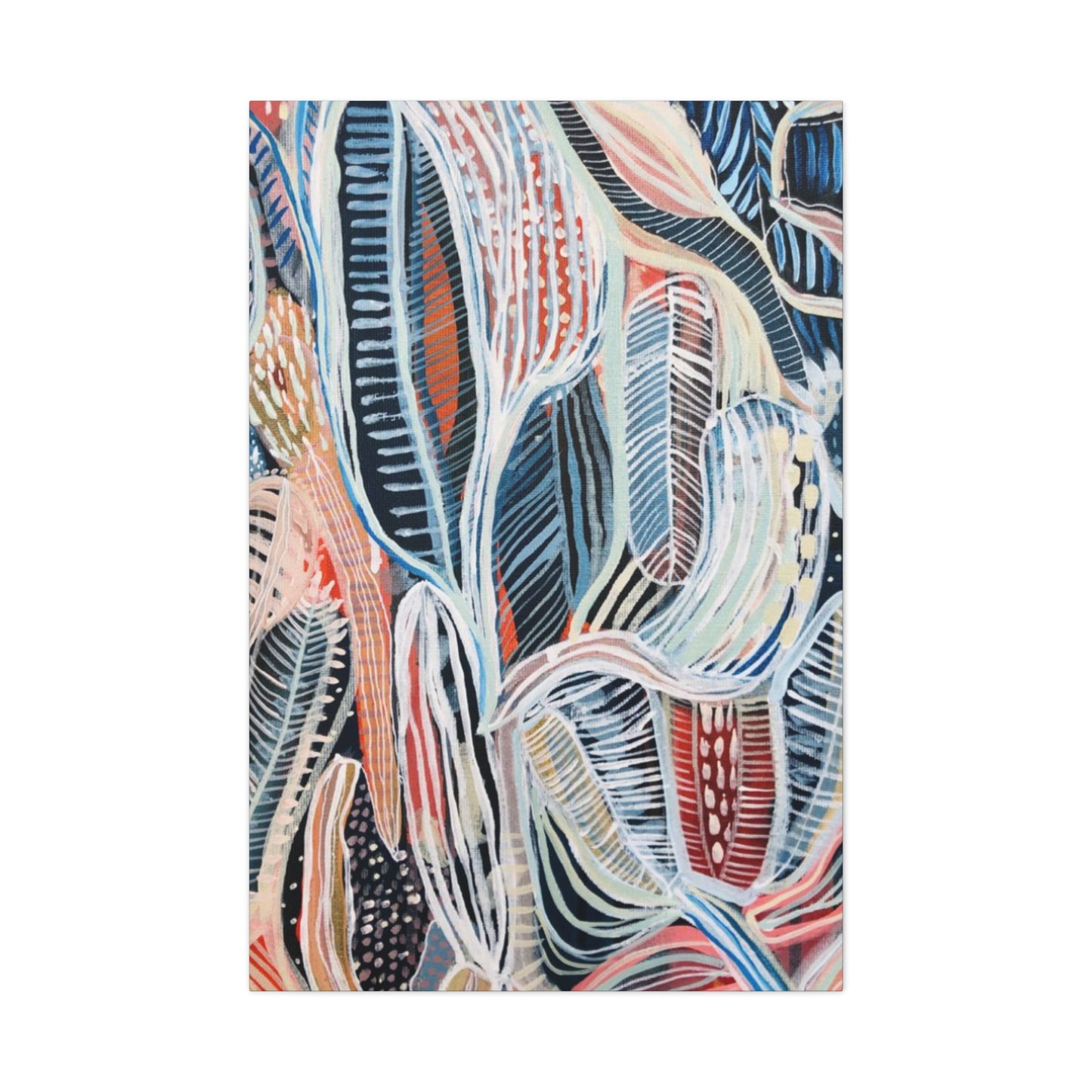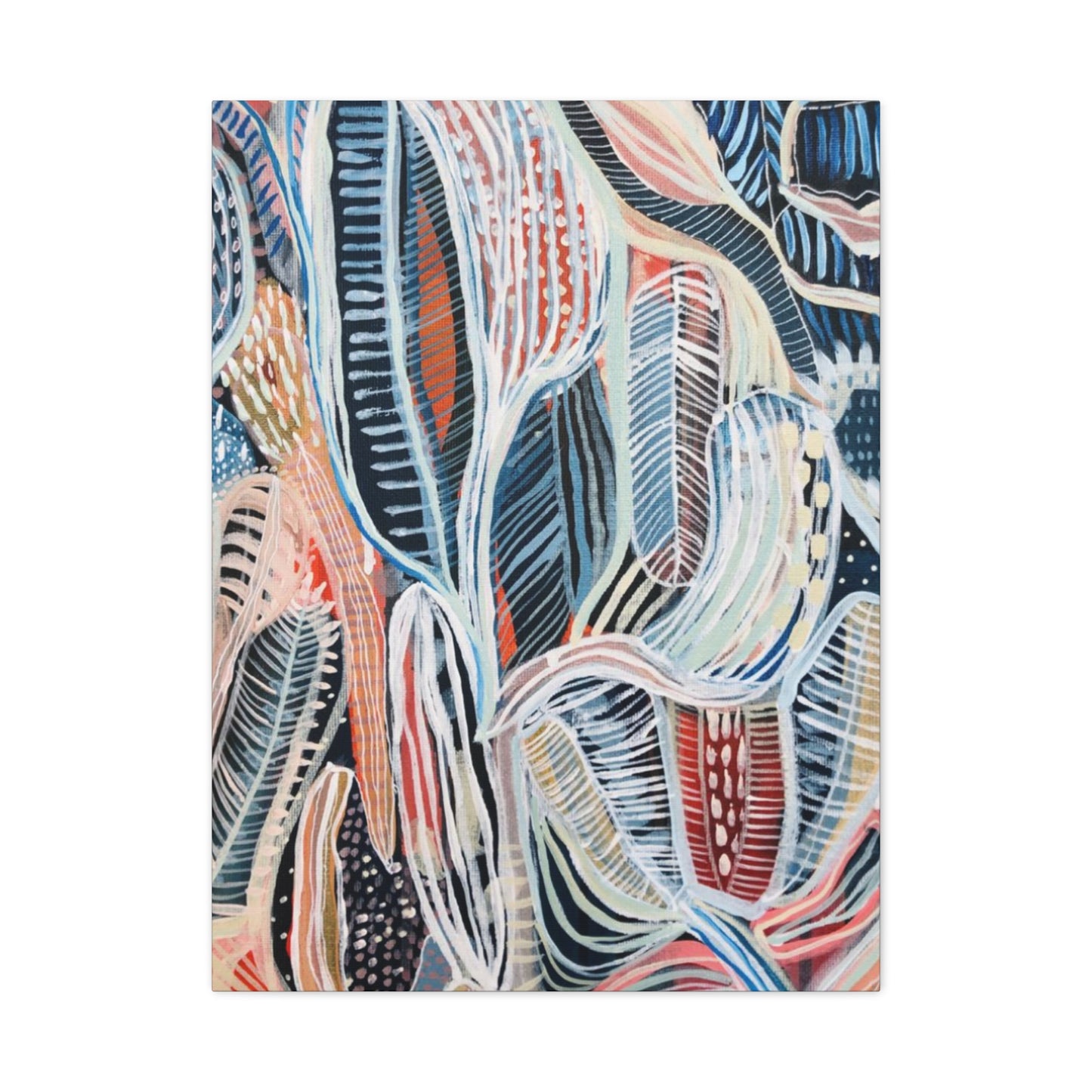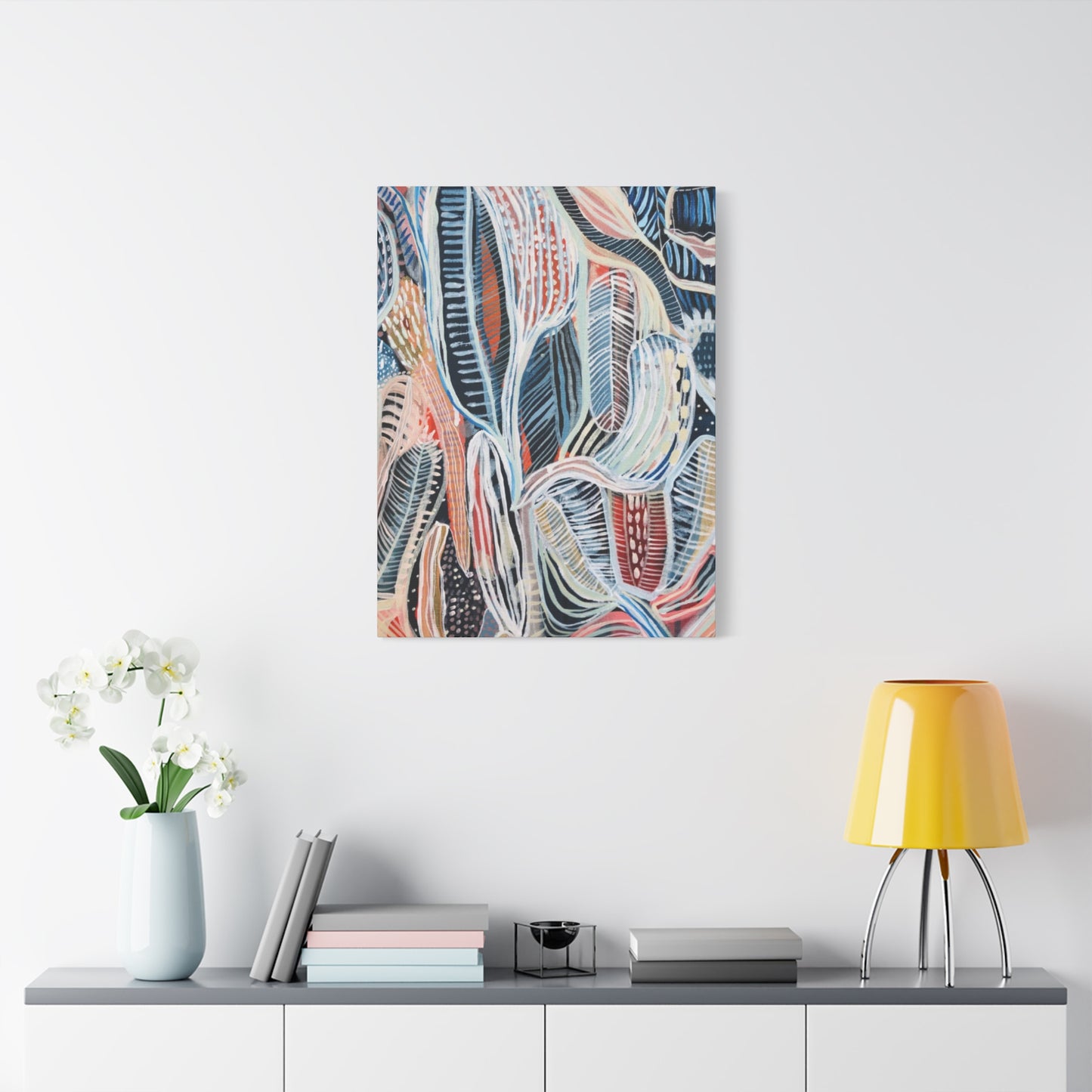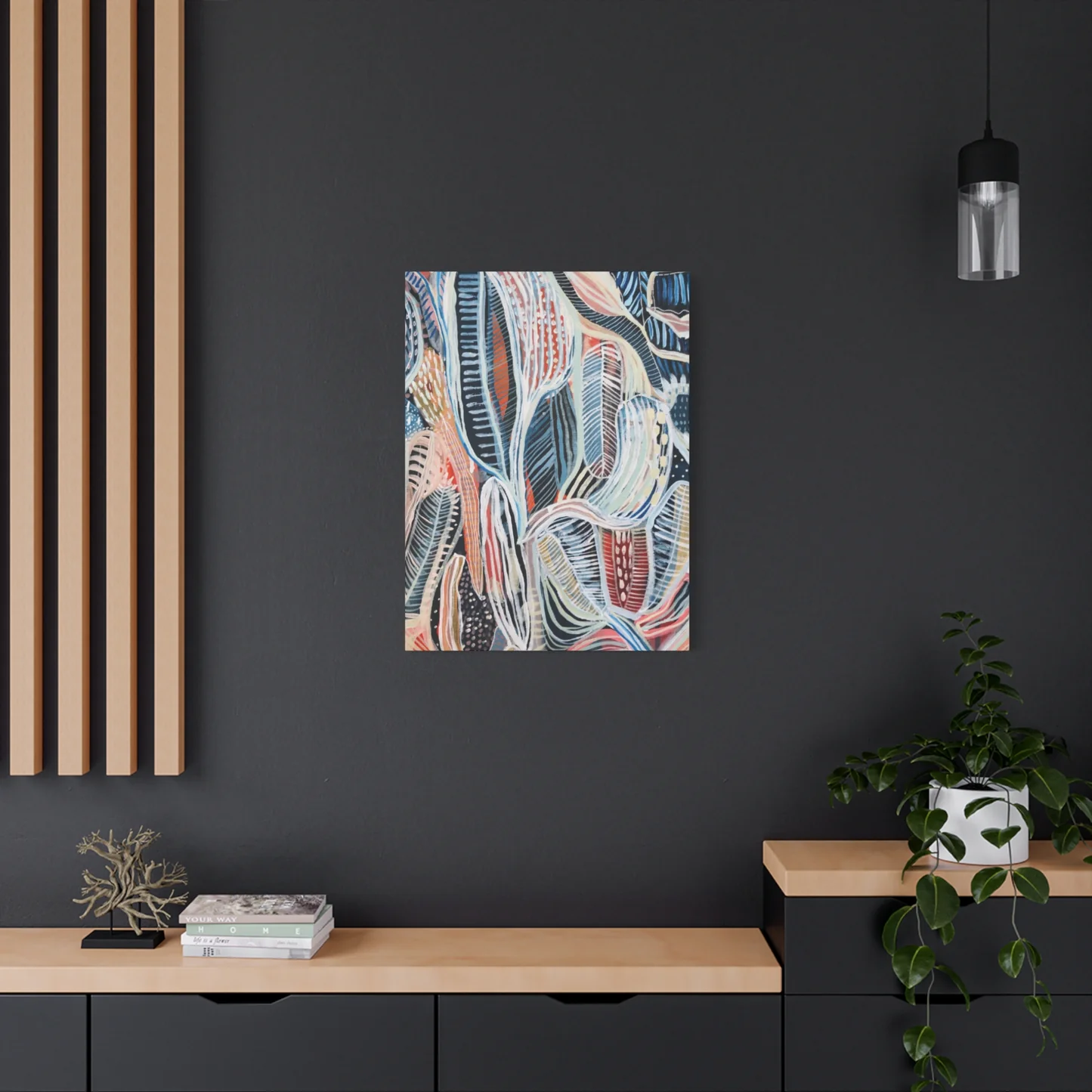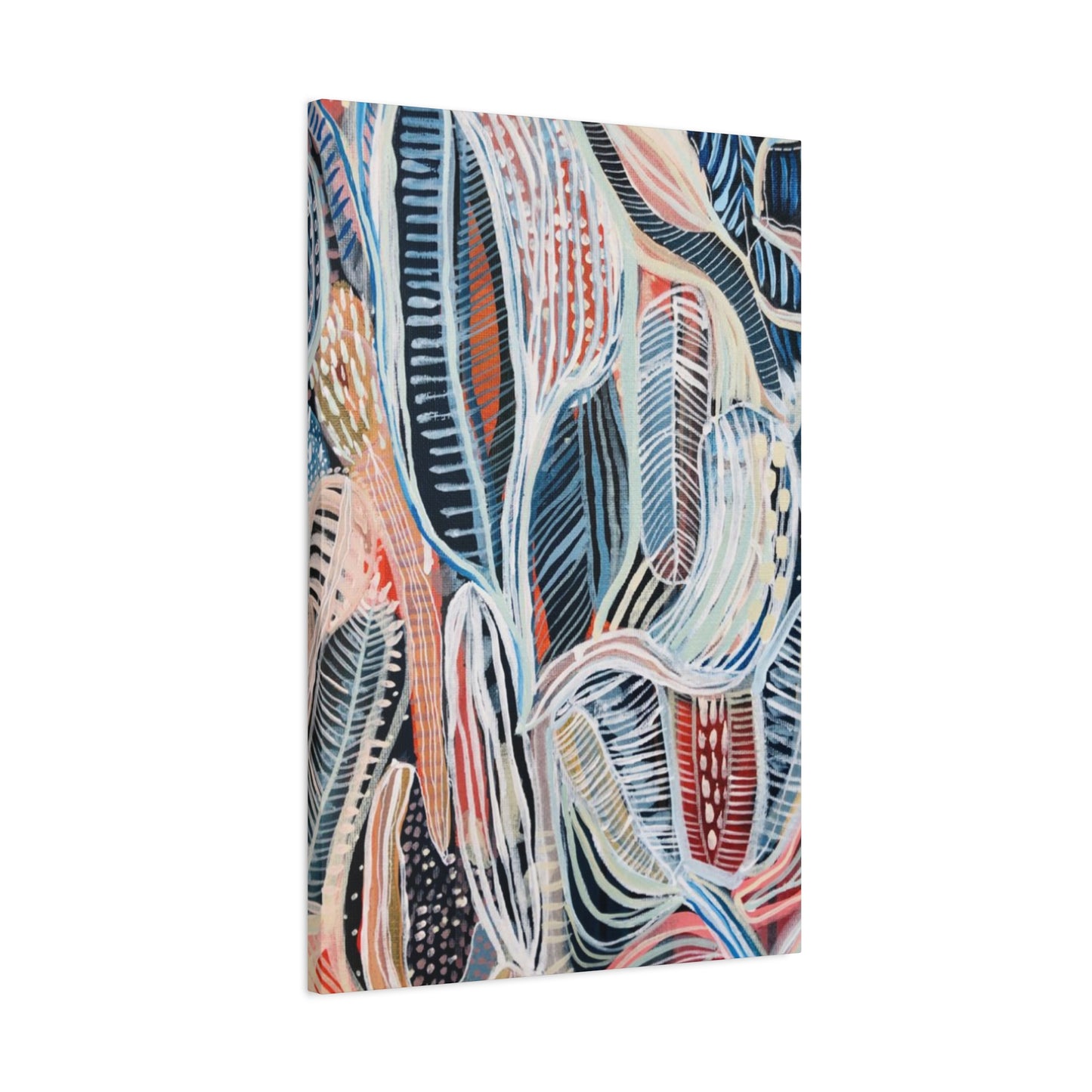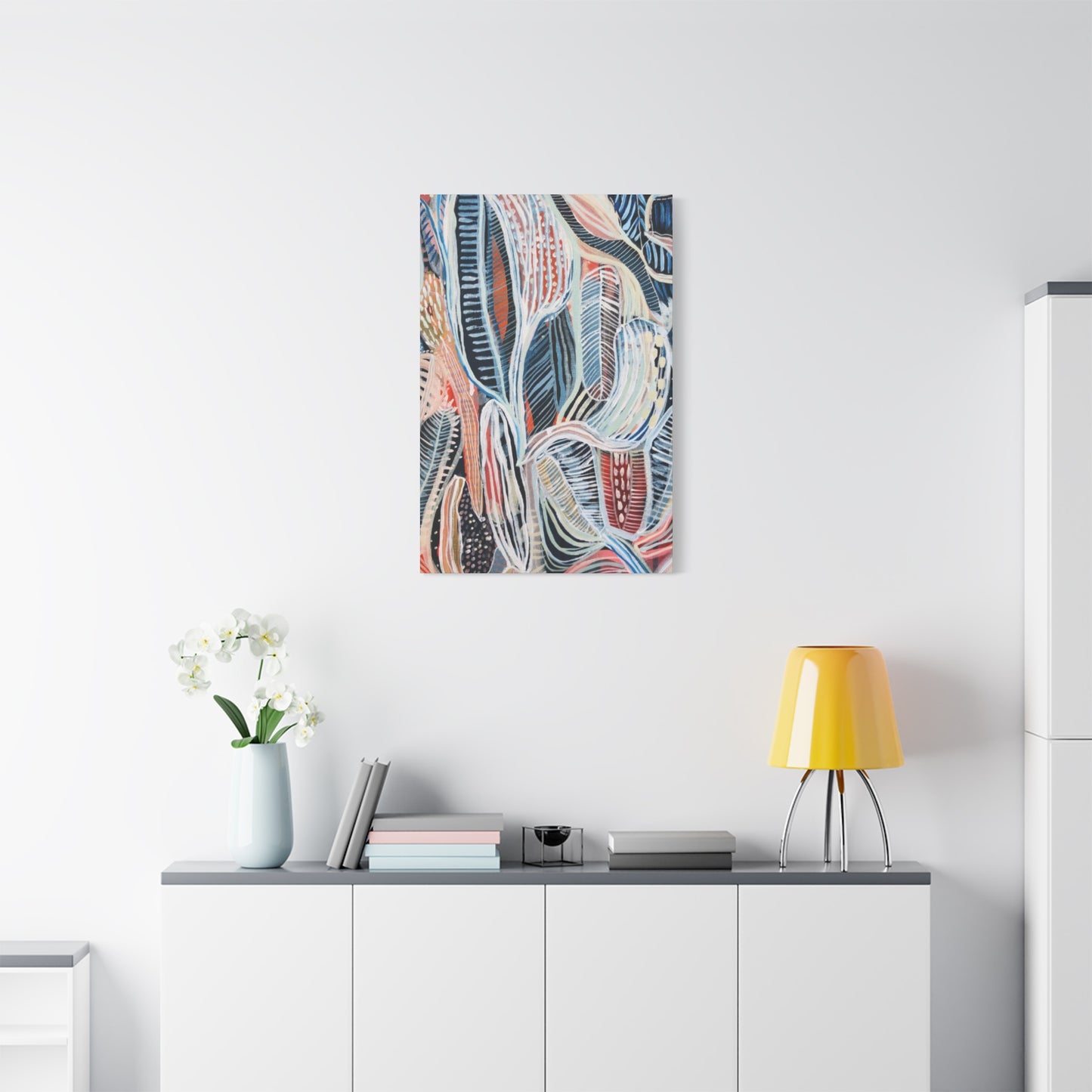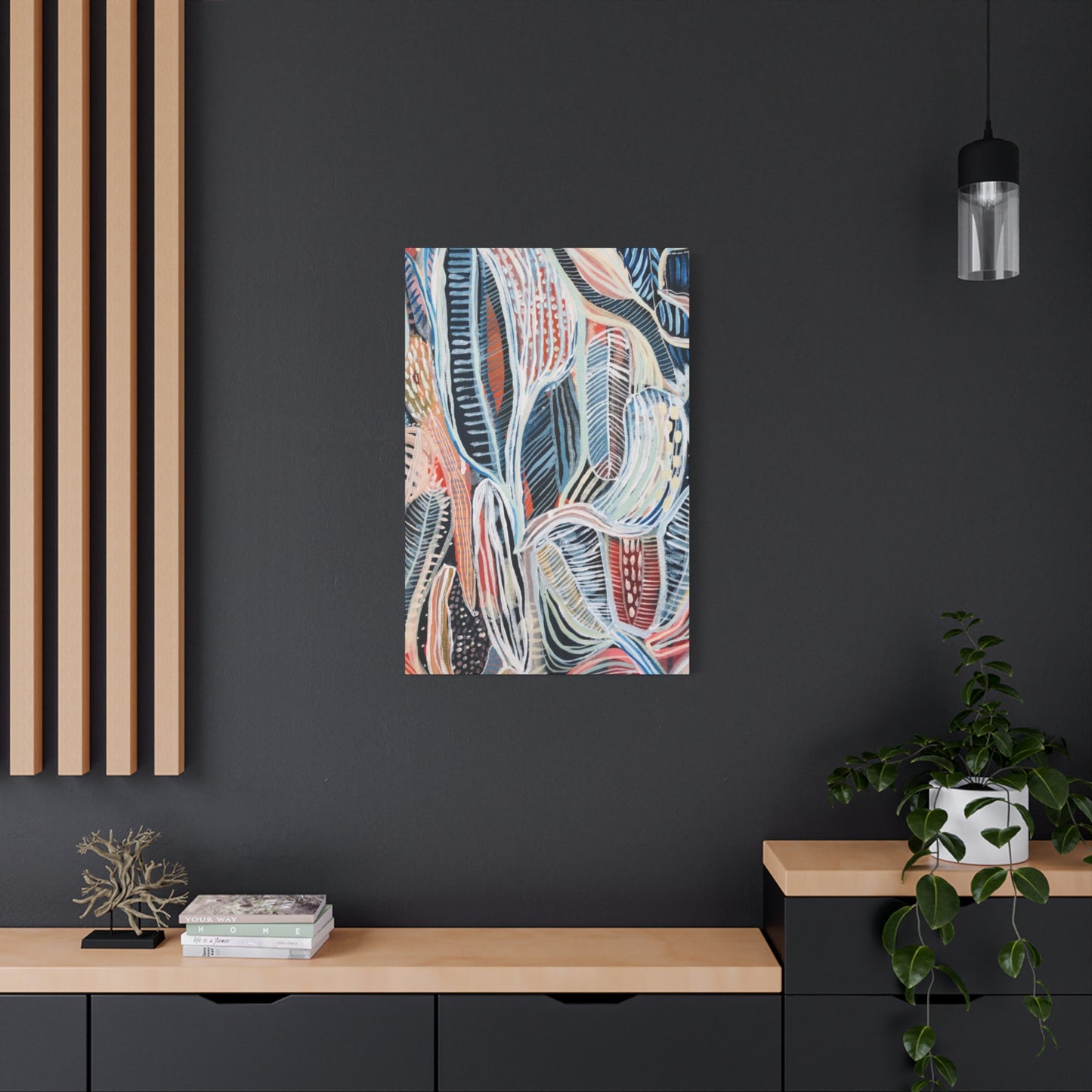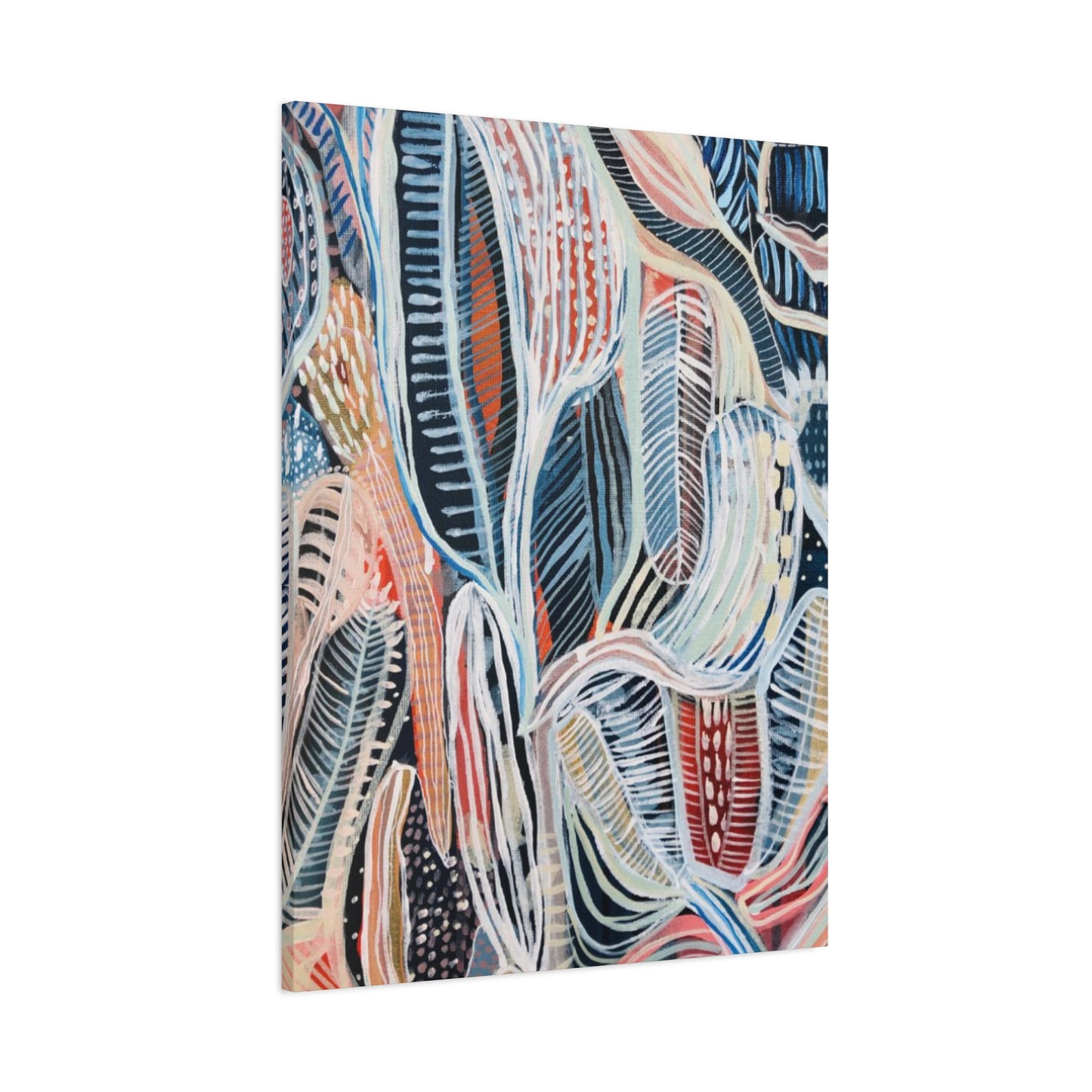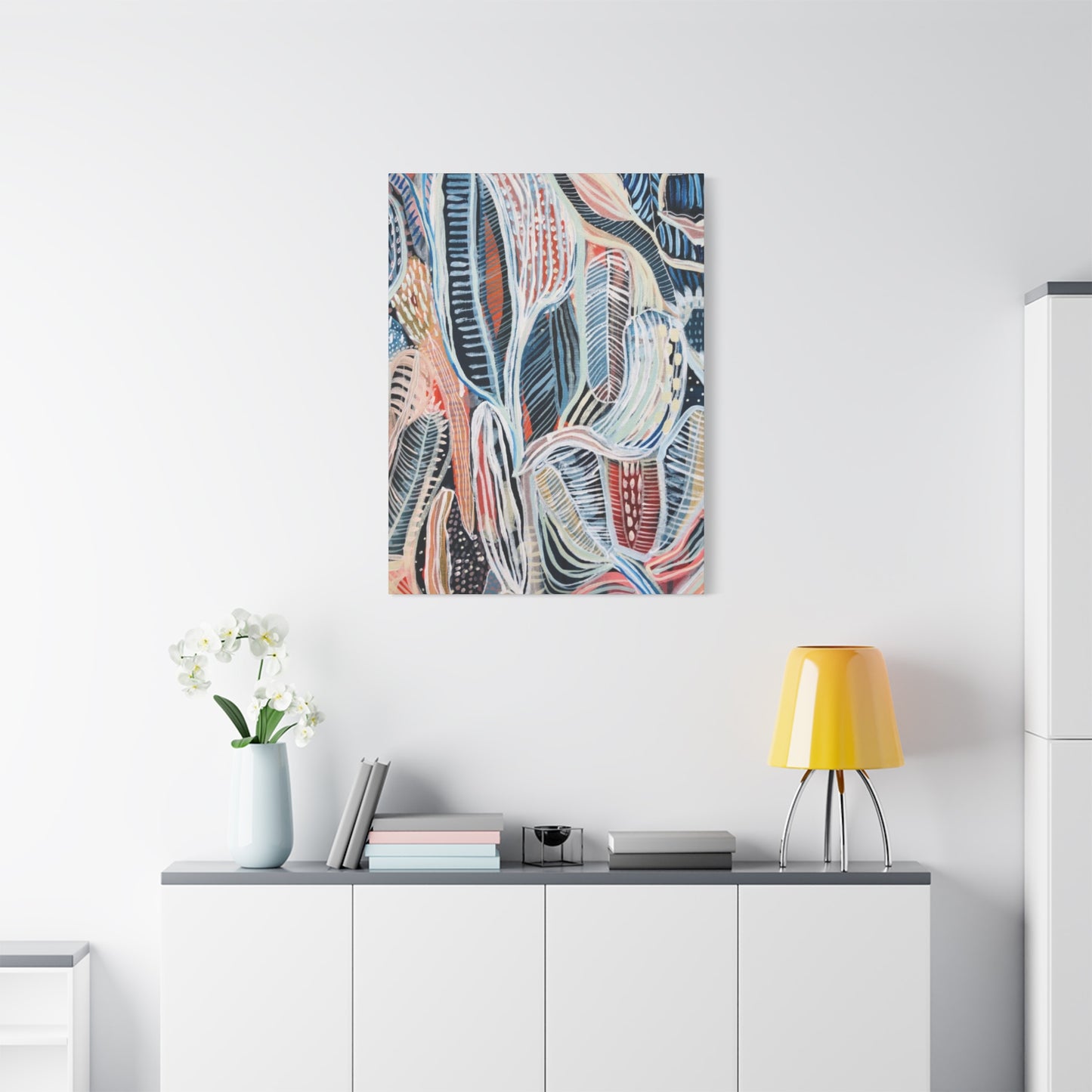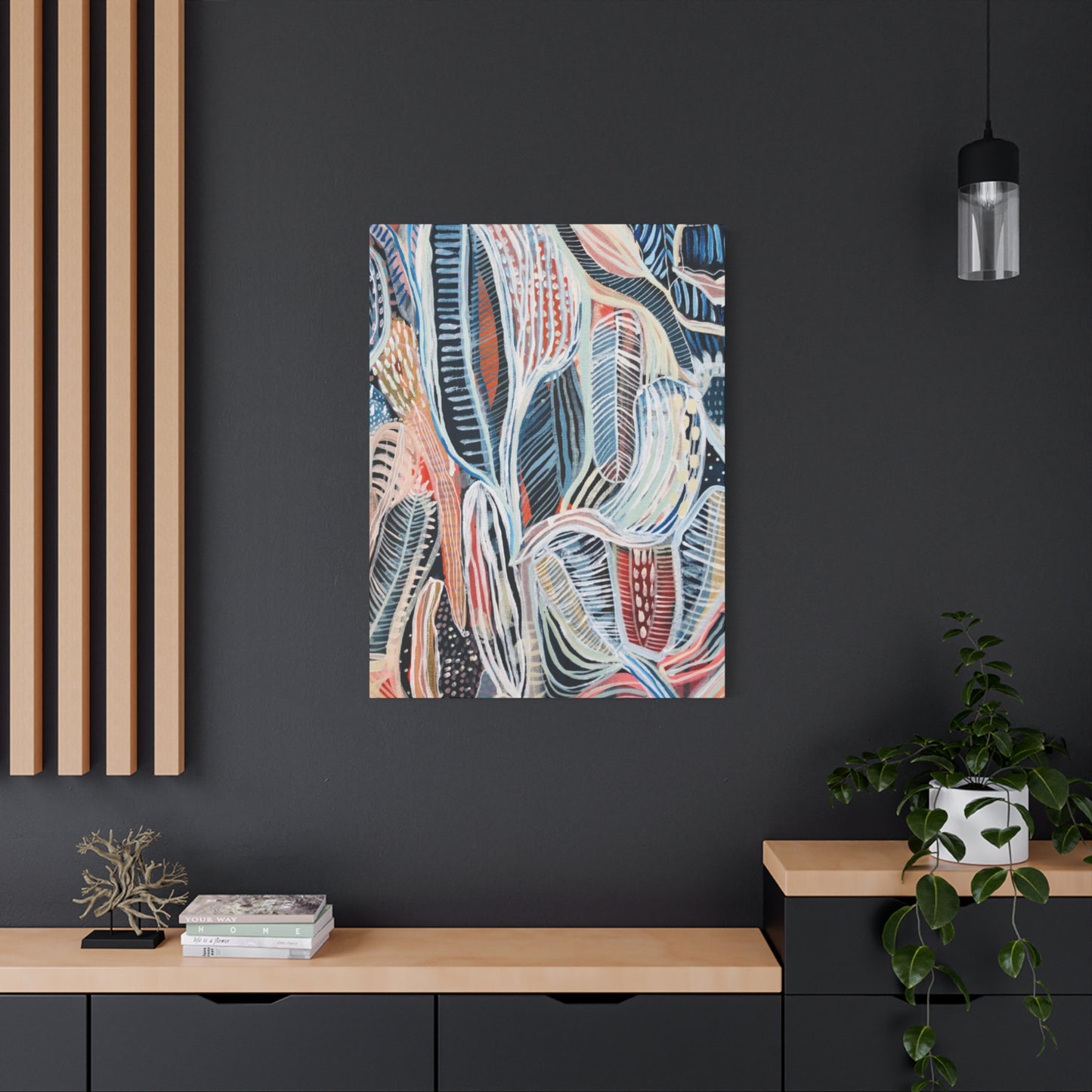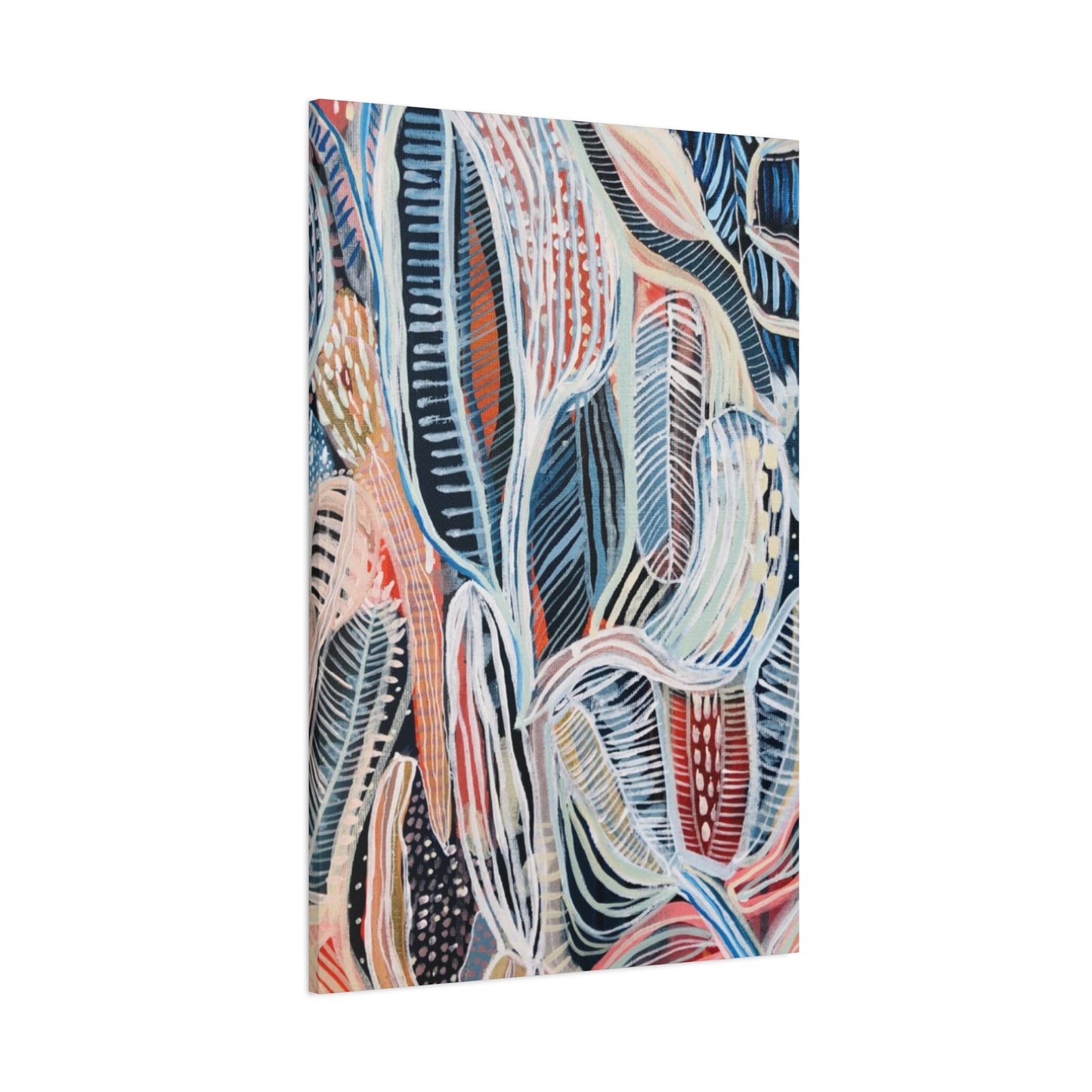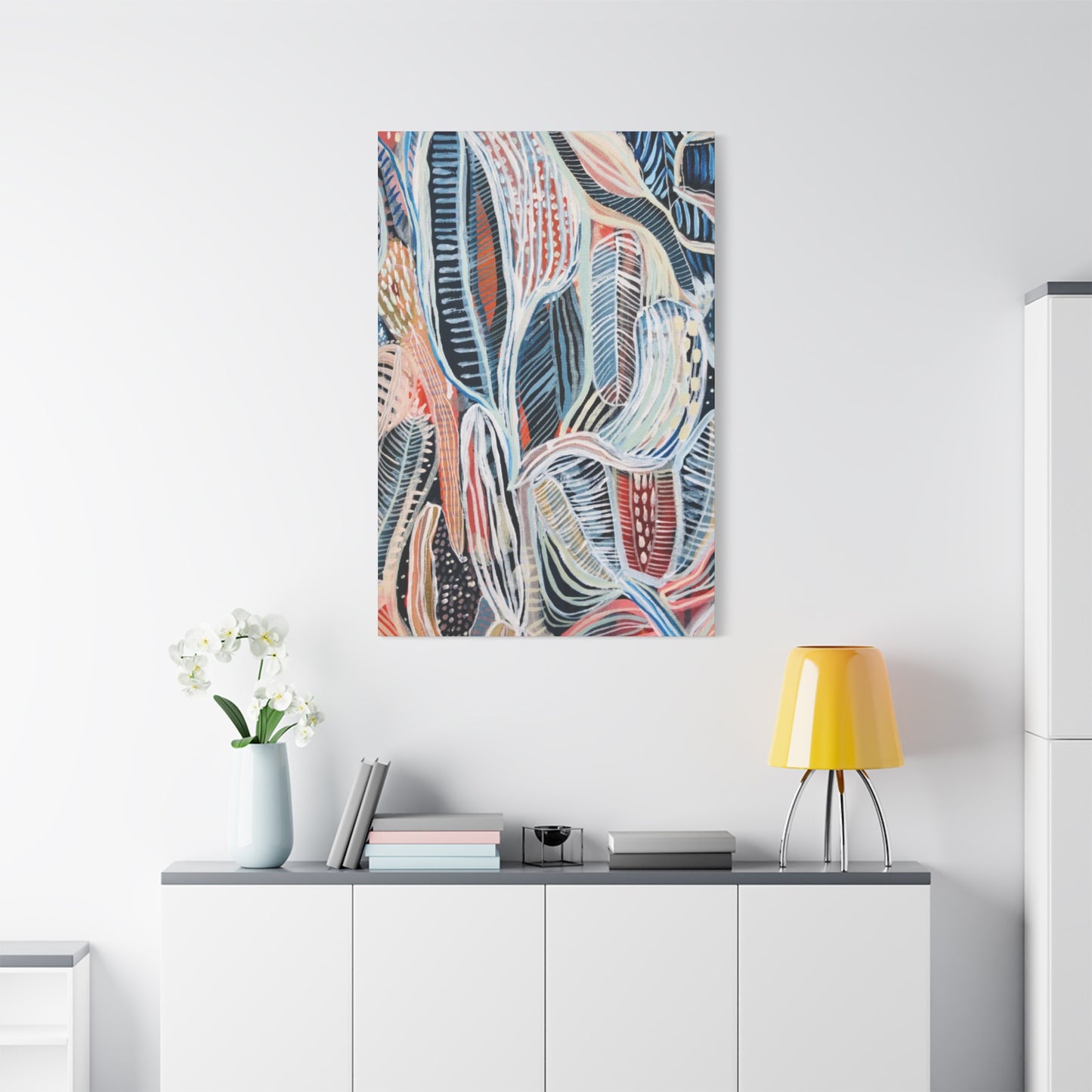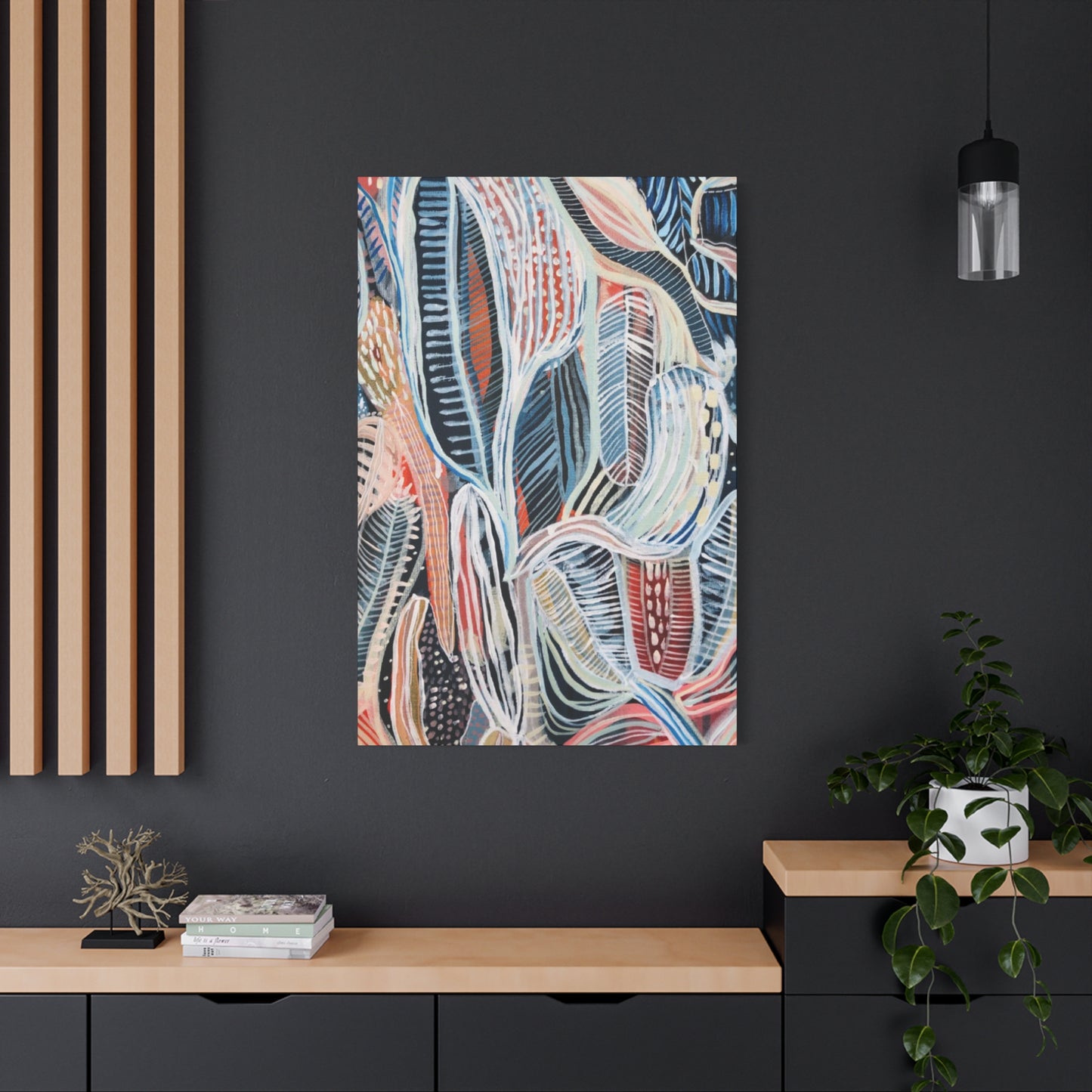Geometric Magic: Stunning Moroccan Architectural Wall Art
The enchanting world of Moroccan geometric art represents centuries of mathematical precision combined with spiritual symbolism. These intricate patterns, known as tessellations, create mesmerizing visual experiences that transform any living space into a sophisticated cultural haven. The geometric designs found in traditional Moroccan wall art are rooted in Islamic artistic traditions, where the infinite repetition of patterns symbolizes the eternal nature of creation and divine unity.
Moroccan geometric patterns typically feature stars, polygons, and interlacing lines that create complex networks of shapes. These designs are not merely decorative elements but carry profound meaning within Islamic culture. The eight-pointed star, or Khatam, frequently appears in Moroccan art and represents regeneration and renewal. Similarly, the hexagonal patterns often seen in these artworks symbolize harmony and balance, reflecting the Islamic belief in cosmic order.
When incorporating geometric Moroccan wall art into contemporary interiors, consider the scale and placement carefully. Large-scale geometric pieces work exceptionally well as focal points above sofas, beds, or dining tables. The mathematical precision of these designs creates a sense of order and tranquility in modern spaces, making them perfect for areas where concentration and calm are desired, such as home offices or meditation rooms.
The color palette in traditional Moroccan geometric art typically includes deep blues, rich reds, golden yellows, and emerald greens, often set against neutral backgrounds. These colors can be adapted to suit contemporary color schemes while maintaining the authentic essence of Moroccan design. For modern minimalist spaces, consider geometric Moroccan art rendered in monochromatic schemes or subtle earth tones.
The production techniques for creating geometric Moroccan wall art vary from hand-painted canvases to digital prints and even three-dimensional installations. Artisans often use traditional methods involving precise measurements and compass-drawn circles to ensure mathematical accuracy. This attention to detail is what gives authentic Moroccan geometric art its hypnotic quality and visual impact.
Contemporary artists have embraced Moroccan geometric patterns, creating innovative interpretations that blend traditional motifs with modern artistic techniques. These contemporary pieces often experiment with scale, color, and medium while respecting the fundamental principles of Moroccan geometric design. The result is artwork that honors cultural heritage while speaking to modern aesthetic sensibilities.
Timeless Arabesque Patterns
Arabesque patterns represent one of the most sophisticated and elegant forms of decorative art in the Islamic world, with Moroccan interpretations being particularly renowned for their complexity and beauty. These flowing, rhythmic designs create an endless tapestry of interwoven vines, leaves, and abstract forms that seem to dance across the wall surface. The arabesque style emerged from the Islamic prohibition against figurative art, leading artists to develop increasingly complex and beautiful abstract patterns.
The fundamental principle of arabesque design is the concept of infinite pattern, where designs flow seamlessly from one element to the next without beginning or end. This creates a meditative quality that draws the viewer into contemplation of the infinite nature of creation. In Moroccan arabesque patterns, you'll often find stylized palmettes, half-palmettes, and vine scrolls that interweave in complex geometric relationships.
Traditional Moroccan arabesque patterns are characterized by their use of both geometric and vegetal elements, creating a sophisticated balance between mathematical precision and organic flow. The patterns often incorporate calligraphic elements, where Arabic letters are transformed into decorative motifs that maintain their sacred meaning while serving an aesthetic purpose. This integration of text and pattern creates layers of meaning that reward careful observation.
Color plays a crucial role in Moroccan arabesque art, with traditional pieces often featuring rich jewel tones against contrasting backgrounds. Deep sapphire blues, emerald greens, and ruby reds are common choices, often accented with gold or silver highlights that catch and reflect light, adding dimensionality to the flat surface. These color choices are not arbitrary but carry symbolic meaning within Islamic culture.
Modern interpretations of Moroccan arabesque patterns have found their way into contemporary interior design, where they serve as sophisticated decorative elements that add cultural depth and visual interest to spaces. Contemporary artists often simplify traditional arabesque motifs while maintaining their essential character, creating pieces that are both accessible to modern viewers and respectful of traditional forms.
The production of arabesque wall art requires exceptional skill and patience, as the intricate interwoven patterns must be executed with perfect precision to maintain their visual coherence. Traditional artisans often begin with a central motif and work outward, carefully balancing positive and negative space to create the characteristic flowing rhythm of arabesque design. This methodical approach ensures that each element of the pattern contributes to the overall harmony of the piece.
When selecting arabesque wall art for contemporary spaces, consider the scale and complexity of the pattern in relation to the room size and furnishing density. Large-scale arabesque pieces work well in spacious rooms where they can be appreciated from a distance, while smaller, more detailed pieces are perfect for intimate spaces where close viewing is possible.
Vibrant Moroccan Tile Prints
Moroccan tile art, or what is commonly known as zellige, represents one of the most distinctive and recognizable forms of North African decorative arts. These vibrant ceramic tiles, with their characteristic hand-cut edges and lustrous glazed surfaces, have been adorning Moroccan palaces, mosques, and homes for over a thousand years. The art of creating these tiles requires exceptional skill and patience, with each piece being individually hand-cut from terra cotta clay and fired in traditional kilns.
The traditional color palette of Moroccan tiles includes the famous cobalt blue, white, green, yellow, and brown, though modern interpretations have expanded this range to include virtually every color imaginable. The cobalt blue, known as "Fes blue," is perhaps the most iconic, deriving its intense color from cobalt oxide and representing the sky and infinity in Islamic symbolism. The white tiles, called "Tetuan white," symbolize purity and wisdom, while green represents Islam and nature.
The patterns created with Moroccan tiles are based on complex geometric principles that have been refined over centuries. Common motifs include eight-pointed stars, crosses, and hexagonal shapes that fit together in intricate tessellations. These patterns are not random but follow strict mathematical rules that ensure perfect symmetry and infinite repeatability. The result is a visual rhythm that is both harmonious and dynamic.
When translated into wall art prints, Moroccan tile patterns retain their visual impact while becoming accessible to a broader audience. These prints capture the essence of traditional zellige work, including the subtle variations in color and texture that give handmade tiles their characteristic charm. High-quality reproductions can faithfully represent the lustrous surface quality and slight irregularities that make authentic Moroccan tiles so appealing.
The versatility of Moroccan tile prints makes them suitable for various interior design applications. In bathrooms, they can create the illusion of actual tiled walls while being more practical and cost-effective. In kitchens, large-scale tile print artwork can serve as stunning backsplashes that are easy to clean and maintain. Living areas benefit from the rich colors and patterns that add warmth and cultural sophistication to the space.
Contemporary interpretations of Moroccan tile art often play with scale and color to create fresh takes on traditional patterns. Some artists create oversized versions of tile motifs, transforming small-scale patterns into bold graphic statements. Others experiment with unconventional color combinations while maintaining the geometric integrity of traditional designs. These modern interpretations allow homeowners to enjoy the beauty of Moroccan tile art while expressing their personal style.
The printing techniques used to create Moroccan tile wall art have evolved to capture the subtle nuances of authentic tiles. Advanced digital printing can reproduce the slight color variations and surface textures that characterize handmade tiles. Some manufacturers even use textured printing techniques to simulate the tactile quality of actual ceramic surfaces, creating prints that engage multiple senses.
Horseshoe Arches in Art
The horseshoe arch, or Moorish arch, stands as one of the most recognizable architectural elements in Moroccan and Islamic design. This distinctive curved form, wider at the bottom than at the top, has graced Moroccan buildings for centuries and continues to inspire contemporary artists and designers. The horseshoe arch represents more than just an architectural feature; it embodies the Islamic concept of the gateway between the earthly and divine realms.
Historically, the horseshoe arch evolved from Roman and Visigothic precedents but reached its most refined form in Islamic architecture. In Morocco, these arches became a defining characteristic of Moorish style, appearing in everything from grand mosque entrances to intimate courtyard doorways. The proportions of these arches follow specific mathematical relationships that create pleasing visual harmony and structural stability.
The symbolic significance of the horseshoe arch in Islamic culture cannot be overstated. The arch represents the dome of heaven, and passing through it symbolizes a spiritual journey. In Moroccan palaces and religious buildings, multiple horseshoe arches create rhythmic colonnades that guide the eye and the spirit toward sacred or important spaces. This symbolic function makes horseshoe arches powerful elements in contemporary wall art.
Artistic interpretations of horseshoe arches range from realistic architectural renderings to highly stylized abstract representations. Some artists focus on the geometric beauty of the arch form itself, creating minimalist compositions that emphasize line and proportion. Others incorporate traditional Moroccan decorative elements such as intricate carved patterns, colorful tiles, or calligraphic inscriptions that would typically adorn actual architectural arches.
Color plays a crucial role in horseshoe arch artwork, with traditional pieces often featuring warm earth tones that reflect the natural clay and stone materials used in Moroccan architecture. Ochres, umbers, and terracottas dominate these palettes, often accented with the brilliant blues and greens of decorative tiles. Contemporary interpretations may explore unconventional color schemes while maintaining the essential character of the arch form.
The three-dimensional quality of actual horseshoe arches presents interesting challenges and opportunities for two-dimensional artwork. Artists often use shading, perspective, and architectural detail to create the illusion of depth and mass. Some pieces focus on the interplay of light and shadow within arched spaces, capturing the dramatic lighting effects that make Moroccan architecture so photogenic and emotionally compelling.
Modern interior designers have embraced horseshoe arch imagery as a way to introduce Moroccan architectural elements into contemporary spaces without actual construction. Large-scale prints or paintings of horseshoe arches can create powerful focal points that suggest architectural grandeur and cultural sophistication. These pieces work particularly well in entryways, where they can symbolically frame the transition between exterior and interior spaces.
Desert Hues: Moroccan Canvases
The landscapes of Morocco, from the rolling dunes of the Sahara to the rugged peaks of the Atlas Mountains, provide an inexhaustible palette of colors that have inspired artists for generations. Desert hue artwork captures these natural colors and translates them into sophisticated interior design elements that bring the warmth and beauty of Moroccan landscapes into contemporary homes. These earth-toned masterpieces evoke the timeless beauty of desert sunsets, ancient kasbahs, and windswept dunes.
The color palette of Moroccan desert landscapes encompasses a remarkable range of warm tones, from pale sand and cream to deep ochre and burnt sienna. These colors are punctuated by the cooler tones of distant mountains and the brilliant blue of desert skies. Traditional Moroccan artists have long understood how to use these natural colors to create compositions that are both harmonious and emotionally evocative.
Moroccan desert-inspired canvases often incorporate traditional motifs and patterns while using the natural color palette as a unifying element. Geometric patterns might be rendered in subtle gradations of sand and stone colors, while arabesque designs flow like desert winds across canvases painted in sunset hues. This combination of traditional form and natural color creates artwork that is both culturally authentic and universally appealing.
The texture plays an important role in desert-themed Moroccan artwork, with many artists using techniques that simulate the feel of sand, weathered stone, or sun-baked clay. Impasto techniques, mixed media applications, and textured grounds all contribute to the tactile quality that makes these pieces so compelling. The goal is to create artwork that not only looks like the Moroccan desert but also captures something of its physical presence.
Contemporary artists working in the Moroccan desert tradition often abstract landscape elements to focus on color, texture, and emotional impact rather than literal representation. These pieces might suggest the vast scale of desert landscapes through simple color fields or evoke the complexity of traditional architecture through layered geometric patterns. The result is artwork that functions as both decoration and meditation on the beauty of natural and cultural landscapes.
The versatility of desert hue palettes makes them particularly suitable for contemporary interior design. These warm, earthy colors complement both modern and traditional furnishing styles while adding depth and sophistication to neutral color schemes. Desert-inspired Moroccan canvases work particularly well in bedrooms and living areas, where their calming colors and organic textures create restful, inviting atmospheres.
Lighting considerations are crucial when displaying desert hue artwork, as these pieces are designed to capture and reflect the warm light of the Moroccan sun. Natural lighting enhances the subtle color variations and textural elements in these works, while artificial lighting should be warm-toned to maintain the intended emotional impact. Properly lit, desert hue canvases can transform ordinary rooms into sophisticated spaces that celebrate the natural beauty of Morocco.
Modern Takes on Moroccan Patterns
Contemporary artists and designers have embraced traditional Moroccan patterns as source material for innovative artwork that bridges cultural heritage and modern aesthetic sensibilities. These modern interpretations maintain the essential character of historic Moroccan designs while exploring new possibilities in color, scale, medium, and application. The result is a vibrant contemporary art movement that honors tradition while speaking to current design trends and lifestyle preferences.
One of the most significant trends in modern Moroccan pattern art is the use of unconventional color palettes that break from traditional jewel tones and earth colors. Contemporary artists experiment with pastels, neons, and monochromatic schemes that give ancient patterns fresh relevance. These new color approaches can make traditional patterns feel current and accessible to audiences who might find historic color schemes too bold or culturally specific for their spaces.
Scale manipulation represents another major innovation in contemporary Moroccan pattern art. Traditional patterns, designed for architectural applications, often feature relatively small repeating motifs. Modern artists create dramatic impact by enlarging these motifs to fill entire canvases or walls, transforming intricate details into bold graphic statements. Conversely, some artists work in the opposite direction, creating incredibly detailed miniature versions of traditional patterns that reward close inspection.
Digital technology has opened new possibilities for creating and reproducing Moroccan-inspired patterns. Computer algorithms can generate infinite variations on traditional motifs, while digital printing allows for precise color control and the ability to print on various surfaces and materials. This technological approach doesn't replace traditional craftsmanship but offers new tools for artistic expression and accessibility.
Mixed media approaches have become increasingly popular among contemporary artists working with Moroccan patterns. These pieces might combine traditional painting techniques with collage elements, metallic accents, or three-dimensional components that add depth and texture to flat patterns. Some artists incorporate actual materials from Morocco, such as sand, clay, or fragments of traditional tiles, creating pieces that are both contemporary artworks and cultural artifacts.
The sustainability movement has also influenced modern takes on Moroccan patterns, with many artists using recycled or eco-friendly materials in their work. Reclaimed wood, recycled metals, and low-VOC paints allow environmentally conscious consumers to enjoy Moroccan-inspired art while maintaining their commitment to sustainable living. This approach often adds an additional layer of texture and character to the finished pieces.
Contemporary Moroccan pattern art often addresses current social and cultural themes while maintaining visual connections to traditional forms. Some artists use traditional pattern structures to explore themes of globalization, cultural identity, and cross-cultural dialogue. These conceptual approaches add intellectual depth to visually appealing artwork, creating pieces that function on multiple levels of meaning and appreciation.
Intricate Zellige-Inspired Art
Zellige, the ancient Moroccan art of hand-cut glazed terra cotta tiles, has inspired a contemporary art movement that captures the beauty and precision of this traditional craft in new forms and media. Zellige-inspired artwork translates the geometric complexity, lustrous surfaces, and subtle imperfections of handmade tiles into paintings, prints, and mixed media pieces that bring the essence of this historic craft into modern interiors.
The traditional zellige process involves shaping clay tiles by hand, firing them in wood-burning kilns, and applying glazes that create the characteristic lustrous finish. Each tile is slightly different from the others, with subtle variations in size, shape, and color that give assembled zellige installations their distinctive handmade character. Contemporary artists working in zellige-inspired styles often incorporate these variations into their work, using intentional irregularities to create visual interest and authenticity.
The geometric patterns possible with zellige tiles follow strict mathematical principles that have been refined over centuries of practice. Basic shapes include squares, rectangles, stars, and crosses that can be combined in complex tessellations. The most sophisticated zellige patterns, such as the taqsim or sebka, require master craftsmen years to learn and execute properly. Contemporary artists study these traditional patterns as source material for artwork that captures their mathematical beauty without requiring actual tilework skills.
Color is perhaps the most distinctive aspect of zellige art, with traditional glazes producing colors that seem to glow from within. The famous cobalt blue of Fez, the pristine white of Tétouan, and the rich green of Meknes each have unique qualities that result from specific combinations of minerals and firing techniques. Modern artists attempt to capture these distinctive colors through various paint and printing techniques, often using metallic accents or special pigments to simulate the lustrous quality of authentic glazes.
The textural quality of zellige surfaces presents interesting challenges for contemporary artists. Actual zellige tiles have subtle surface irregularities and slight dimensional variations that create complex patterns of light and shadow. Some modern artists use impasto techniques or mixed media applications to simulate these textural qualities, while others focus on capturing the visual effect through careful attention to color and value relationships.
Large-scale zellige-inspired artwork has become particularly popular in contemporary interior design, where oversized representations of traditional tile patterns create dramatic focal points. These pieces allow homeowners to enjoy the visual impact of elaborate zellige installations without the expense and complexity of actual tilework. High-quality reproductions can be virtually indistinguishable from the real thing when viewed from normal distances.
The modular nature of traditional zellige patterns makes them particularly suitable for contemporary art applications. Artists can create works that suggest infinite extension beyond the boundaries of the canvas or frame, maintaining the mathematical integrity of traditional patterns while adapting them to the rectangular format of contemporary artwork. This approach creates pieces that feel both complete and part of something larger.
Moroccan Wall Art for Minimalists
The apparent contradiction between elaborate Moroccan decorative traditions and minimalist design principles has inspired a fascinating subset of contemporary artwork that distills Moroccan visual culture to its essential elements. These minimalist interpretations maintain the cultural authenticity and visual impact of traditional Moroccan design while conforming to the clean, uncluttered aesthetic preferences of contemporary minimalist interiors.
Minimalist Moroccan wall art often focuses on single traditional motifs rather than complex pattern combinations. A simple eight-pointed star, rendered in monochromatic tones, can capture the essence of Moroccan geometric tradition while fitting seamlessly into a sparse, contemporary interior. These simplified approaches require careful attention to proportion and detail, as there are fewer elements to create visual interest and impact.
Color reduction is a key strategy in minimalist Moroccan art, with many pieces using only two or three colors instead of the rich palettes typical of traditional work. Neutral tones such as white, beige, and gray often dominate these pieces, with single accent colors providing subtle references to traditional Moroccan color schemes. This restrained approach allows the geometric beauty of Moroccan patterns to shine without overwhelming minimalist spaces.
Line quality becomes particularly important in minimalist Moroccan artwork, as there are fewer decorative elements to mask imperfections or distract attention. Clean, precise lines are essential for maintaining the mathematical integrity that makes Moroccan patterns so compelling. Some minimalist artists use computer-aided design tools to ensure perfect geometry, while others embrace subtle hand-drawn variations that add human warmth to austere compositions.
Scale considerations are crucial when creating minimalist Moroccan wall art, as these pieces often function as the primary or sole decorative element in spare interiors. Large-scale works can command attention through size and geometric impact, while smaller pieces must achieve their effect through perfect proportions and flawless execution. The relationship between the artwork and surrounding negative space becomes a critical design consideration.
Material choices in minimalist Moroccan art often emphasize natural textures and sustainable production methods. Unbleached papers, natural pigments, and simple framing solutions align with both minimalist aesthetic principles and contemporary environmental concerns. These material choices can add subtle textural interest without compromising the clean, uncluttered appearance that minimalist design requires.
The philosophical connections between Islamic geometric tradition and minimalist design principles create interesting opportunities for contemporary artists. Both traditions value mathematical order, spiritual contemplation, and the beauty of simple forms. Minimalist Moroccan art can thus function as meditation aids or spiritual focal points, providing contemplative elements that enhance the peaceful atmosphere of minimalist interiors.
Floral Motifs in Moroccan Designs
Despite the Islamic tradition's general prohibition against figurative art, stylized floral motifs have played an important role in Moroccan decorative arts for centuries. These botanical elements, transformed through abstraction and geometric interpretation, create some of the most beautiful and sophisticated patterns in the Moroccan artistic tradition. Contemporary floral-inspired Moroccan wall art continues this tradition while exploring new possibilities for botanical abstraction and pattern development.
Traditional Moroccan floral motifs draw inspiration from the gardens and natural landscapes of North Africa and Andalusia. Palmettes, stylized leaves, vine scrolls, and abstract flower forms appear throughout Moroccan decorative arts, often combined with geometric elements to create complex, layered patterns. These botanical elements are always highly stylized, transformed through artistic interpretation to remove specific naturalistic details while maintaining essential organic qualities.
The rose holds particular significance in Moroccan culture and frequently appears in traditional decorative arts. The city of Kelaat M'Gouna, known for its rose festival and rose water production, has inspired countless artistic interpretations of rose motifs in Moroccan design. These stylized roses often appear in repeating patterns that suggest rose gardens or bouquets without literal representation, maintaining the abstract quality essential to Islamic decorative tradition.
Palmette motifs, derived from palm fronds and other large leaves, are among the most common floral elements in Moroccan design. These motifs can appear as individual decorative elements or as components in larger arabesque patterns. The palmette's fan-like shape makes it particularly suitable for geometric interpretation, as it can be easily integrated into symmetrical compositions while maintaining its organic character.
Color plays a crucial role in Moroccan floral artwork, with traditional pieces often using naturalistic colors that evoke actual botanical subjects. Greens of various shades represent leaves and stems, while flowers might appear in reds, yellows, blues, or purples. However, the stylized nature of these motifs allows for considerable artistic freedom in color choice, and contemporary interpretations often explore unconventional color combinations that maintain visual coherence while expressing individual artistic vision.
The integration of floral motifs with geometric patterns represents one of the highest achievements of Moroccan decorative arts. Master artisans have developed sophisticated systems for combining organic and geometric elements that create unified, harmonious compositions. Contemporary artists study these traditional integration methods while developing their own approaches to combining botanical and mathematical elements in wall art.
Seasonal themes often appear in Moroccan floral wall art, with different motifs representing various times of year or stages of plant growth. Spring compositions might emphasize new growth and flowering, while autumn pieces could focus on fruit and seed motifs. These seasonal references add temporal depth to decorative artwork while maintaining the timeless quality that makes Moroccan design so enduringly appealing.
Symmetry in Moroccan Architecture
The mathematical precision of Moroccan architectural symmetry has inspired countless artists to explore the visual and spiritual dimensions of perfect balance in wall art. Architectural symmetry in Moroccan tradition goes beyond mere aesthetic preference to embody profound spiritual and cultural beliefs about harmony, order, and the nature of divine creation. Contemporary artwork based on these symmetrical principles brings the monumental beauty of Moroccan architecture into intimate interior spaces.
Traditional Moroccan architectural symmetry operates on multiple levels simultaneously. Individual decorative elements exhibit internal symmetry, while their arrangement within larger compositions follows symmetrical principles as well. This creates nested systems of symmetry that reward both casual viewing and careful analysis. The famous Court of Lions at the Alhambra exemplifies this multilevel approach, with symmetrical fountain placement, arcade rhythms, and decorative panel arrangements all contributing to an overall sense of perfect balance.
The mathematical basis of Moroccan architectural symmetry draws from Islamic geometric traditions that view mathematical harmony as reflecting divine order. Symmetrical compositions often incorporate the numbers three, four, five, eight, and twelve, which hold special significance in Islamic numerology. These numerical relationships appear in proportion systems, pattern repetitions, and architectural spacing that create subconscious associations with spiritual harmony and cosmic order.
Bilateral symmetry, where compositions are identical on either side of a central axis, appears frequently in Moroccan architectural decoration. Door surrounds, window frames, and arcade compositions often use this approach to create formal, dignified appearances that suggest stability and permanence. Contemporary wall art based on bilateral symmetry can create similar psychological effects, making spaces feel more organized and peaceful.
Radial symmetry, where elements are arranged around a central point, represents another important symmetrical principle in Moroccan architecture. Dome decorations, fountain designs, and courtyard layouts often use radial symmetry to create focal points that draw the eye and organize surrounding space. Wall art based on radial symmetry can serve similar functions in contemporary interiors, providing visual anchors that give rooms clear hierarchical organization.
The interplay between symmetry and asymmetry in Moroccan architecture creates visual interest while maintaining overall harmony. Master architects and craftsmen understood that perfect symmetry could become monotonous, so they introduced subtle variations and intentional imperfections that enliven symmetrical compositions. Contemporary artists working with Moroccan symmetrical principles often incorporate similar strategies to create artwork that is both harmonious and engaging.
Color symmetry represents another dimension of Moroccan architectural decoration that translates effectively into wall art. Traditional compositions often use symmetrical color arrangements that balance warm and cool tones, light and dark values, and saturated and muted hues. These color symmetries can be more subtle than formal symmetries but equally important for creating visual harmony and emotional impact in both architectural and artistic contexts.
Colorful Moroccan Canvas Ideas
The rich color traditions of Moroccan decorative arts provide endless inspiration for contemporary canvas artwork that brings the warmth, vibrancy, and cultural sophistication of North African design into modern interiors. Moroccan color schemes, developed over centuries of artistic refinement, offer sophisticated combinations that are both culturally authentic and universally appealing. Understanding these traditional color relationships enables contemporary artists and homeowners to create stunning canvas art that captures the essence of Moroccan visual culture.
Traditional Moroccan color palettes are based on both natural and cultural associations that give them deep emotional resonance. The famous blue of Chefchaouen, a brilliant cobalt that covers an entire city, represents the sky, infinity, and spiritual contemplation. This blue, combined with white, creates one of the most recognizable Moroccan color combinations and forms the basis for countless contemporary canvas designs. The psychological effects of this blue-white combination include feelings of peace, expansion, and spiritual elevation.
Red holds equally important significance in Moroccan color traditions, representing life, passion, and celebration. The particular shade of red associated with Marrakech, a warm, earthy tone with orange undertones, appears throughout Moroccan decorative arts and contemporary interpretations. When combined with complementary greens, traditional Moroccan gold, or contrasting blues, red creates dynamic color schemes that are both energizing and sophisticated.
Green, representing Islam, nature, and renewal, appears in various shades throughout Moroccan decorative traditions. From the deep forest green of traditional mosque decorations to the bright mint green of contemporary Moroccan interiors, this color adds freshness and vitality to any color scheme. Green-based Moroccan canvas art often incorporates botanical motifs or geometric patterns that emphasize the connection between color and natural themes.
The metallic accents characteristic of Moroccan decorative arts translate beautifully into contemporary canvas work. Gold, silver, and copper tones add luxury and sophistication to color schemes while reflecting light in ways that enliven wall surfaces. Contemporary artists use various techniques to achieve metallic effects, from actual metal leaf application to special metallic paints and printing processes that capture the lustrous quality of traditional metalwork.
Earth tones derived from Moroccan landscapes and architecture provide sophisticated neutral bases for more vibrant color accents. Ochres, umbers, siennas, and clay colors create warm, welcoming backgrounds that complement both traditional and contemporary furnishings. These earth-tone canvases often incorporate subtle texture effects that simulate the surfaces of adobe walls, weathered stone, or sun-baked clay.
Contemporary color interpretations of Moroccan themes often explore unconventional combinations while maintaining the emotional impact and cultural associations of traditional palettes. Pastels, neons, and monochromatic schemes can give traditional Moroccan patterns fresh relevance while preserving their essential character. These modern color approaches allow homeowners to enjoy Moroccan-inspired art while expressing personal style preferences and coordinating with existing interior color schemes.
Moroccan Geometry at Home
Incorporating Moroccan geometric principles into home decoration through wall art creates living spaces that reflect the mathematical beauty and spiritual harmony of Islamic artistic traditions. Moroccan geometric design, based on complex mathematical relationships and symbolic meaning, offers homeowners sophisticated decorative options that are both visually stunning and culturally meaningful. Understanding how to integrate these geometric principles into contemporary interiors requires knowledge of both traditional design rules and modern application strategies.
The fundamental principle underlying Moroccan geometric design is the concept of infinite pattern, where decorative elements can theoretically extend without limit in all directions. This creates a sense of expansiveness that makes spaces feel larger and more open, regardless of their actual dimensions. When selecting geometric wall art for home use, consider pieces that suggest continuation beyond their frames, creating implied connections with surrounding space and other decorative elements.
Scale relationships in Moroccan geometric art must be carefully considered when adapting traditional patterns for home use. Patterns designed for architectural applications may need to be enlarged or reduced to work effectively in residential spaces. Large-scale geometric pieces work well as focal points in spacious rooms, while smaller, more intricate patterns are better suited for intimate spaces where detailed viewing is possible. The key is matching pattern complexity and scale to room function and viewing distance.
Color coordination between Moroccan geometric wall art and existing interior elements requires understanding both traditional color relationships and contemporary design principles. Traditional Moroccan geometric art often features high contrast color combinations that create strong visual impact. However, these can be overwhelming in small spaces or rooms with busy furnishings. Consider using geometric art with muted color schemes or limiting high-contrast pieces to rooms with simple, neutral furnishing schemes.
The mathematical precision of Moroccan geometric patterns makes them particularly suitable for creating visual order in cluttered or chaotic spaces. Geometric wall art can serve as organizing elements that give rooms clear focal points and establish visual hierarchies. This is especially effective in multipurpose rooms or open-plan spaces where geometric art can help define different functional areas while maintaining overall design coherence.
Lighting considerations are crucial when displaying Moroccan geometric art at home, as these pieces often rely on subtle color relationships and fine linear details that can be lost under poor lighting conditions. Natural light enhances the complexity and beauty of geometric patterns, while artificial lighting should be carefully positioned to avoid glare and shadows that might obscure important details. Consider using picture lights or track lighting to ensure optimal viewing conditions.
The modular nature of many Moroccan geometric patterns makes them suitable for series installations, where multiple related pieces create larger compositional statements. This approach works particularly well in hallways, staircases, or large walls where single pieces might seem lost or undersized. Series installations allow homeowners to build geometric collections over time while maintaining design coherence and visual impact.
Layered Patterns: Moroccan Style
The sophisticated art of layering patterns represents one of the most advanced and visually compelling aspects of Moroccan decorative tradition. This technique involves combining multiple pattern systems in single compositions, creating complex visual textures that reward both casual viewing and detailed examination. Contemporary wall art based on layered pattern principles brings the depth and richness of traditional Moroccan design into modern interiors while offering unique opportunities for personal expression and artistic innovation.
Traditional Moroccan pattern layering follows established hierarchical principles that ensure visual coherence despite compositional complexity. Primary patterns, usually geometric or large-scale arabesque designs, establish the basic structure and rhythm of compositions. Secondary patterns, often smaller in scale or lighter in value, fill spaces within primary patterns or create connecting elements between major motifs. Tertiary patterns might include fine linear details, texture effects, or color variations that add subtle complexity without overwhelming the overall design.
The visual effects achieved through pattern layering create sense of depth and dimensionality that transforms flat surfaces into complex visual environments. Different pattern layers can appear to exist at different spatial depths, with some elements seeming to float above others or recede into background space. This illusion of depth is achieved through careful attention to scale relationships, color values, and linear weight that create natural visual hierarchies.
Color relationships become particularly complex in layered pattern compositions, as multiple color systems must work together harmoniously while maintaining individual identity and function. Traditional Moroccan layered patterns often use analogous color schemes where different pattern layers use related hues at different saturation levels. This approach creates unity while allowing individual layers to maintain distinct characteristics and functions within overall compositions.
Contemporary interpretations of Moroccan pattern layering often simplify traditional approaches while maintaining essential visual effects. Modern artists might combine only two or three pattern systems instead of the five or six layers common in historic examples. This simplification makes layered patterns more accessible to contemporary viewers while reducing visual complexity that might overwhelm modern interior spaces with simpler furnishing schemes.
Digital technology has opened new possibilities for creating and reproducing layered pattern artwork. Computer design programs allow artists to experiment with pattern combinations, color relationships, and transparency effects that would be difficult or impossible to achieve with traditional media. Digital printing can reproduce the subtle color relationships and fine details essential for effective pattern layering while maintaining the precision necessary for complex geometric relationships.
The psychological effects of layered patterns include feelings of richness, luxury, and cultural sophistication that make spaces feel more interesting and welcoming. These complex visual textures provide ongoing visual interest that rewards repeated viewing, making them particularly suitable for spaces where people spend extended periods of time. Bedrooms, living rooms, and home offices can all benefit from the visual richness that layered pattern artwork provides.
Abstract Moroccan Wall Prints
The evolution of traditional Moroccan decorative motifs into abstract contemporary artwork represents an exciting development in both Islamic art and modern design. Abstract Moroccan wall prints distill the essential visual and emotional qualities of traditional patterns while exploring new possibilities for artistic expression and interior decoration. These pieces maintain cultural connections to Moroccan artistic heritage while speaking to contemporary aesthetic sensibilities and lifestyle preferences.
Abstract interpretation of Moroccan motifs often focuses on basic geometric shapes, color relationships, and compositional principles rather than specific traditional patterns. This approach allows artists greater freedom to experiment with scale, proportion, and color while maintaining the mathematical harmony and spiritual significance that make Moroccan design so compelling. The result is artwork that feels both familiar and fresh, connecting viewers to ancient traditions while expressing contemporary artistic vision.
Color abstraction in Moroccan-inspired artwork often emphasizes emotional and psychological effects over literal representation of traditional palettes. Artists might use traditional Moroccan colors in new combinations or explore entirely unconventional color schemes that maintain the intensity and sophistication of historic work. These color experiments can create artwork that captures the feeling of Moroccan design without directly copying traditional color relationships.
Conclusion
Geometric Magic: Stunning Moroccan Architectural Wall Art embodies the perfect blend of culture, history, and visual sophistication, making it an exceptional choice for interior decoration. Moroccan architecture is renowned for its intricate patterns, detailed mosaics, and symmetrical designs, and these elements are masterfully captured in wall art. Each piece brings the essence of Morocco’s rich heritage into a living space, transforming ordinary walls into vibrant showcases of artistry and craftsmanship. The geometric patterns, arches, and ornamental details not only celebrate architectural brilliance but also create a sense of rhythm and harmony, captivating anyone who gazes upon them.
Incorporating Moroccan architectural wall art into interiors allows homeowners and designers to infuse spaces with elegance and cultural depth. These artworks serve as statement pieces, enhancing living rooms, dining areas, and hallways while complementing diverse décor styles, from modern minimalism to traditional luxury. The symmetry and repetition inherent in Moroccan designs can evoke calm and balance, making these pieces ideal for both personal and professional environments. They also spark curiosity and appreciation for global architecture, offering viewers a visual journey through Morocco’s iconic landmarks and artistic traditions.
The craftsmanship and attention to detail in Moroccan wall art are remarkable. Artists meticulously render the complex patterns, capturing both the grandeur of architectural forms and the delicate intricacy of ornamental motifs. The interplay of colors, lines, and textures creates a dynamic visual experience, allowing light and shadow to accentuate the three-dimensional quality of the designs. This attention to detail ensures that each piece becomes more than decoration—it becomes a conversation starter, a cultural symbol, and a timeless artistic investment.
Ultimately, Geometric Magic: Stunning Moroccan Architectural Wall Art transforms interiors into spaces of inspiration and aesthetic pleasure. It bridges the gap between historical art forms and contemporary design, offering a unique way to celebrate heritage while enhancing modern living environments. By incorporating such wall art, spaces gain elegance, sophistication, and a touch of exotic allure, making it an enduring and captivating addition to any home or workspace.

















